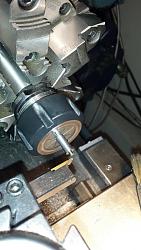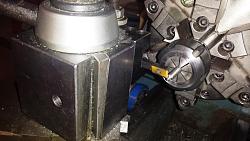I do a lot of machining with stainless steel rods that are 0.375" or smaller in diameter. I have a very accurate D1-3 mounted 6-Jaw chuck that can be adjusted with four adjustment screws on the D1-3 backplate and has very little TIR (typically 0.0004" or less). However the 6-Jaw chuck cannot closed down enough to hold the small diameter rods.
I purchased a very accurate CNC ER32 collet chuck rated with 0.0001" TIR that can be held in the 6-Jaw chuck. By rotating the CNC collet chuck within the 6-Jaws and measuring with a gauge pin, it is possible to find the optimum position where the error in the chuck and collect chuck tend to cancel each other out within typically around 0.0002" to 0.0003" TIR depending on how much time you spend initially making the Adjust Tru adjustments to the 6-jaw chuck.
I use a Sharpie pen to mark the optimum position of one chuck jaw and collect chuck barrel for future reference. My lathe spindle has zero measurable TIR using a 0.0001" Interapid test indicator for measurements and does not contribute to the TIR error. I have another chuck that can hold the smaller diameter rods but swapping out chucks is not as fast as using the collet chuck.
Below are photos of the dual chuck setup using a 6-Jaw Gator lathe chuck with Adjust Tru and the very accurate CNC ER32 collet chuck (TECHNIKS ER32 1.1/2 SH CNC COLLET CHUCK https://www.kbctools.com/default.asp...85&parent=2350
The photo below shows machining the major diameter to a 0.110 X 52 TPI thread for a Starrett handle to their inside micrometer (see http://www.homemadetools.net/forum/e...eter-set-65509 ) for more details.
The photo below shows using a technique to single point thread cutting to a shoulder by using the "upside down" single point thread cutting method of running the lathe spindle in reverse. It is a lot safer method when thread chasing to a shoulder for fine pitch threads.
Regards,
Paul Jones


 LinkBack URL
LinkBack URL About LinkBacks
About LinkBacks




 Reply With Quote
Reply With Quote


Bookmarks